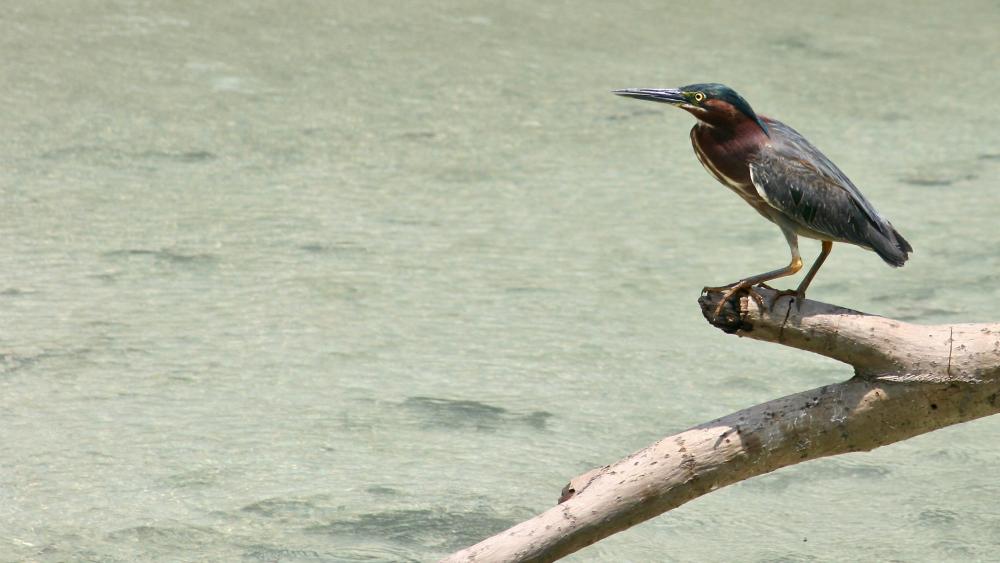
Sulphur mollies (Poecilia sulphuraria) react to fish-eating birds, such as the green heron (Butorides virescens), with fast dives. To avoid wasting energy, the fish have to distinguish between real attacks and non-threatening overflights. | Photo: Juliane Lukas
The ability of animals to effectively avoid predators is crucial for their survival. Prey must therefore be able to accurately interpret cues of potential danger, and distinguish them from disturbances that pose no threat. The international research team led by IGB researcher David Bierbach has investigated the antipredator behaviour of fish – the sulphur molly (Poecilia sulphuraria) – to avoid bird predation in a field environment and under lab conditions. In their natural habitat – sulphidic springs in southern Mexico – sulphur mollies are exposed to high rates of bird predation and evolved strategies to adapt their shoaling behaviour to this threat.
Escape response in energy-saving mode
Piscivorous birds must first enter the water before they can catch their prey. As such, they provide both visual and acoustic cues upon impact with the water surface or when diving into water. By contrast, overflying birds only produce visual cues. In a laboratory experiment, the researchers exposed groups of sulphur mollies to three different cue modalities: a visual cue, an acoustic cue and both cues combined. As the combined cue mimicked a real bird attack, it was predicted that fish should respond strongest to this treatment.
And indeed, the research team found that sulphur mollies, which spend much of their time at the water surface, respond in a fine-tuned way to visual and acoustic cues: “Interestingly, fish responded with diving in 96 per cent of all cases, regardless of stimulus type. However, depth, duration and velocity of the dive were dependent on whether fish were responding to a single or the combined cue. For fish, this seems to be an optimal strategy: They are highly responsive to all cues, but do not waste too much energy when it turns out that there was no bird attack,” explained IGB researcher Juliane Lukas, lead author of the study.
Multistage antipredator responses are a common strategy among prey
In other words, the fish respond in two stages: the “all-or-nothing” response pattern of unselective dive initiation is followed by fine-tuning of certain dive parameters to the observed cues. Such multistage antipredator responses have also been described in other animals. “By performing successive behaviours, animals can update information about the predator or gather new information, optimising their behaviour at each stage – which reduces their risk of being eaten and minimises the efforts if it turns out to be less dangerous after all,” concluded Juliane Lukas.




